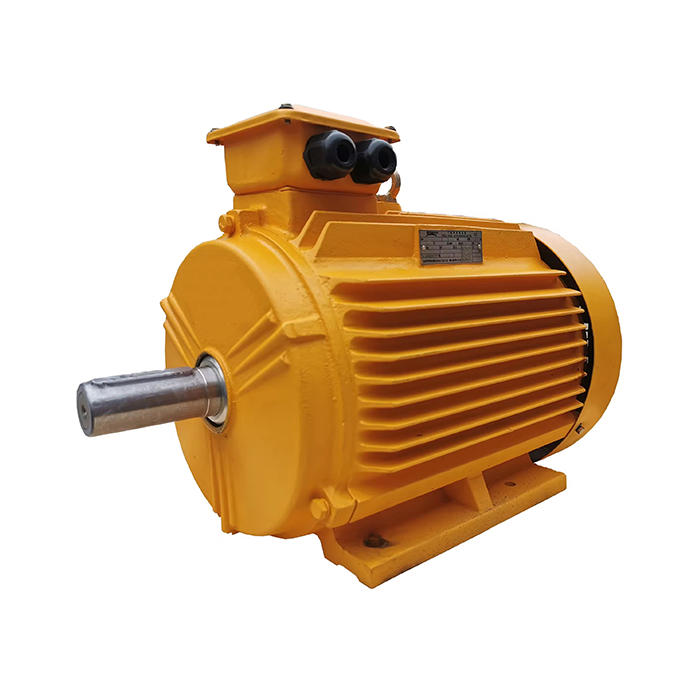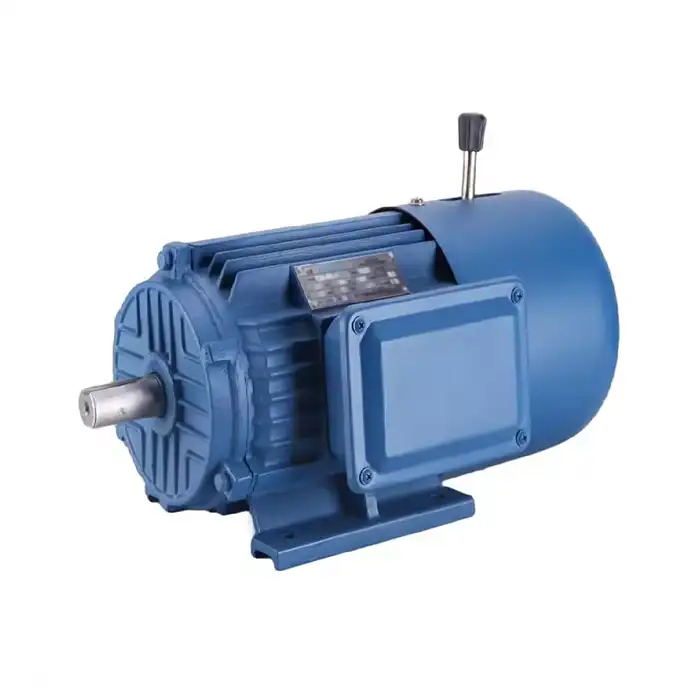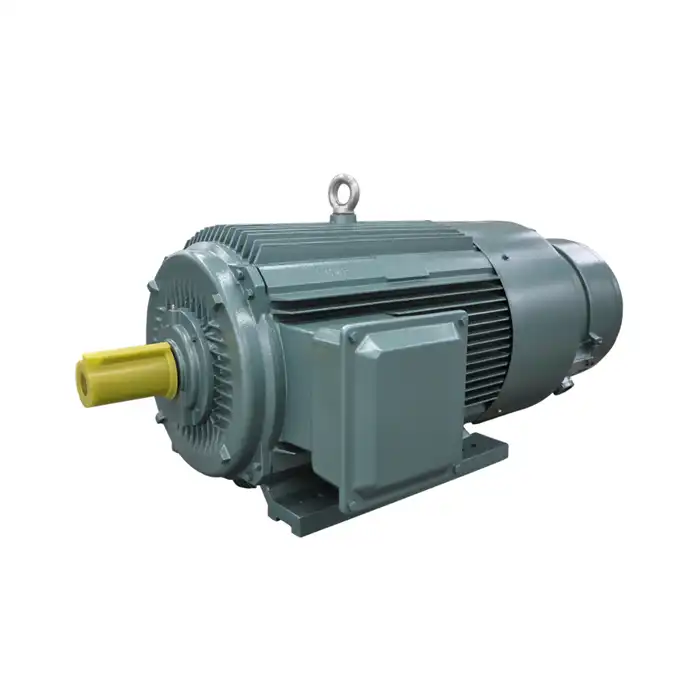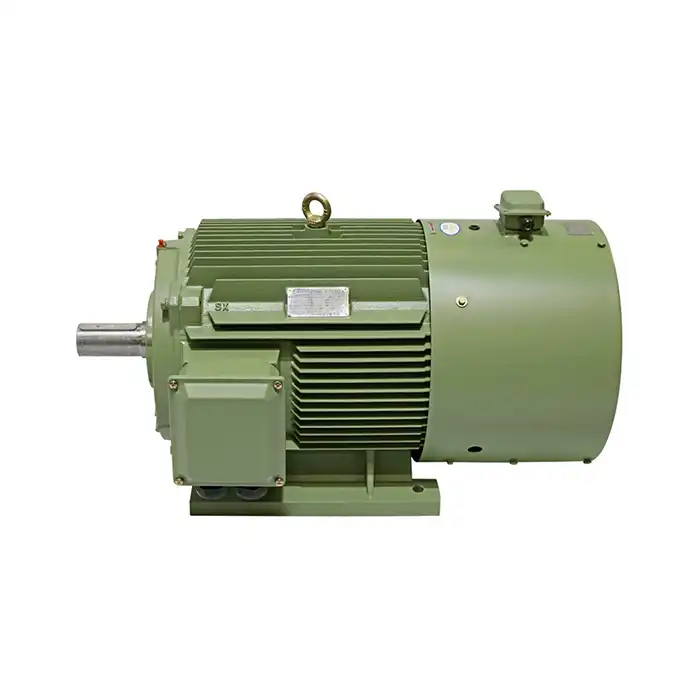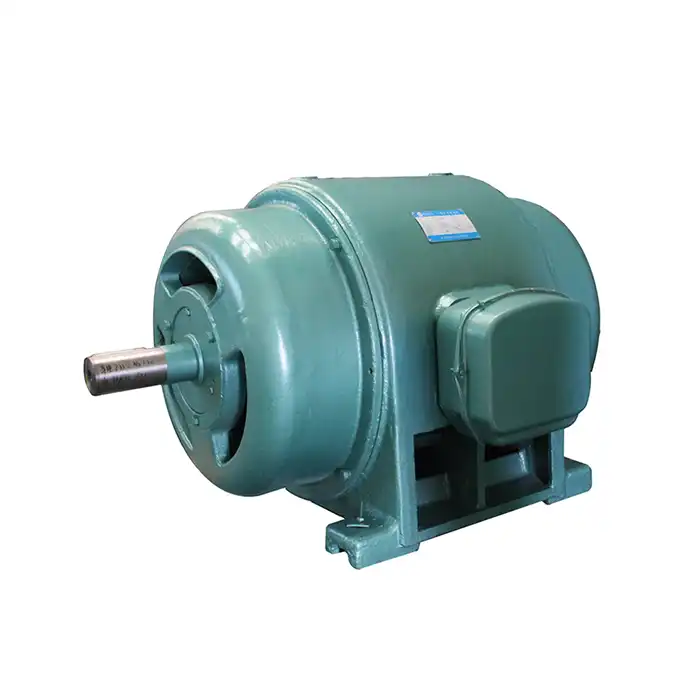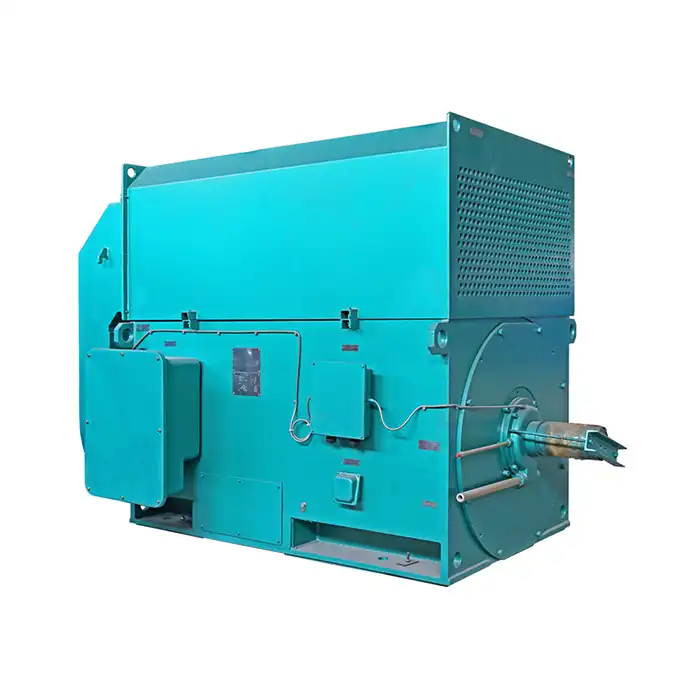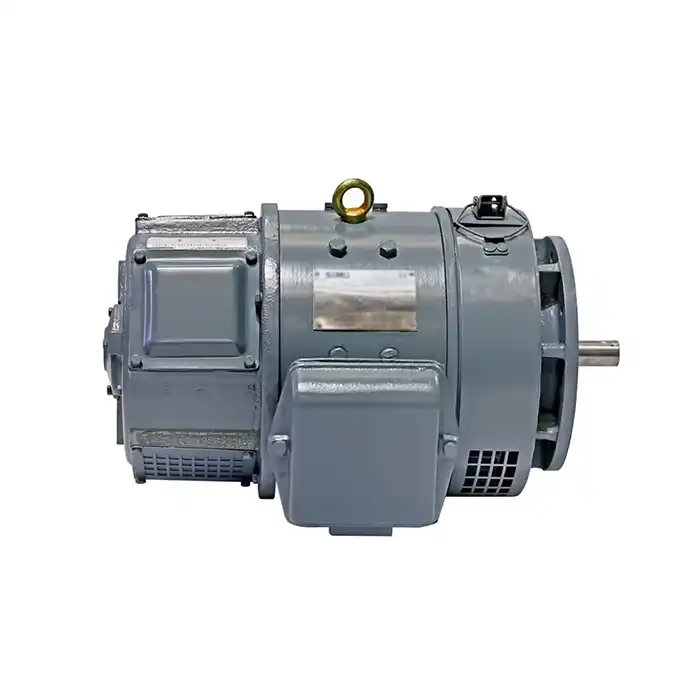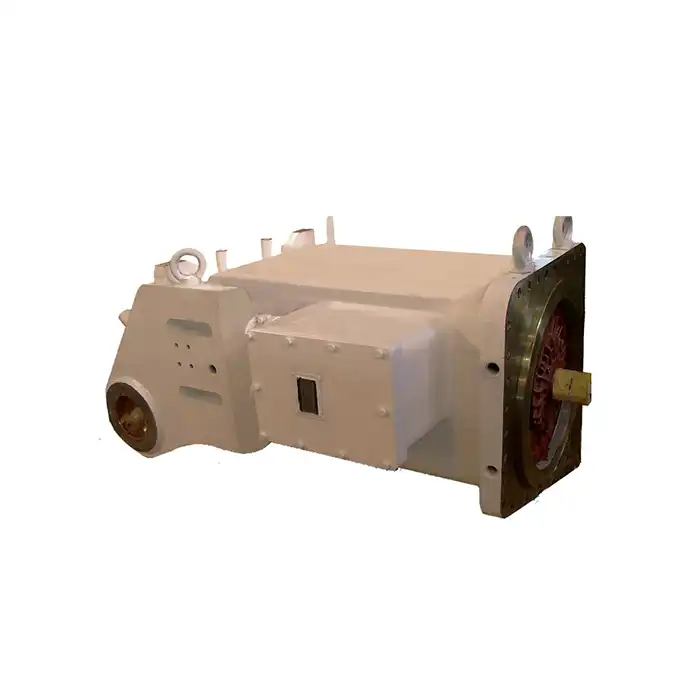Selecting the best LV induction motor in China requires a balance of quality, efficiency, and cost-effectiveness. These motors play a crucial role across diverse industries, from manufacturing and HVAC to energy utilities and transportation. When choosing an LV induction motor, pay attention to key factors such as power output, efficiency ratings, protection levels, and compliance with international standards like IEC60034-30. Equally important is the motor's adaptability to different voltage ranges and its operational reliability in demanding environments. By understanding these criteria, you'll make an informed decision and ensure reliable performance aligned with your specific application needs.
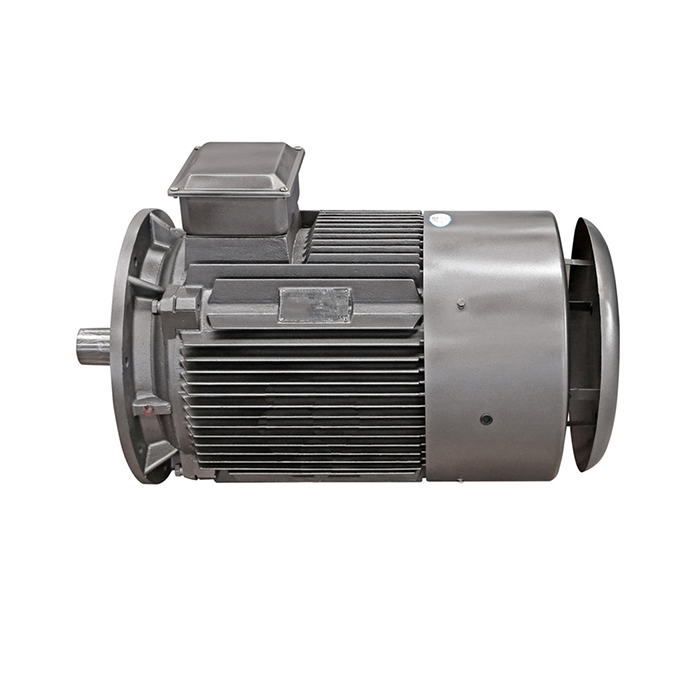
Series:YE3
Frame number: 80-450
Power range:0.75-1000kW
Protection level:IP55
Energy efficiency class: IE3
Voltage range: 380V,400V,415V,660V, etc.
Application:can be used in various fields of the national economy, such as machine tools,water pumps,fans,compressors,and can also be used in transportation, mixing, printing, agricultural machinery, food and other occasions that do not contain flammable, explosive or corrosive gases.
Certificate: international standard IEC60034-30 "Efficiency Classification of Single-speed Three-Phase Squirrel Cage Induction Motors".
Advantage:The high quality of the electric motor guarantees high operational reliability.
Others: SKF, NSK, FAG bearings can be replaced according to customer requirements.
Why Focus on LV Induction Motors?
Low-voltage induction motors are foundational components in industrial automation and commercial applications worldwide. Their widespread use stems from their ruggedness, simplicity, and energy-efficient operation. The versatility of these motors supports operations in industries ranging from automotive assembly lines and food processing to HVAC systems and renewable energy sectors. Quality electric motors enhance system reliability and reduce downtime, which is critical for industrial productivity. Choosing the right LV induction motor ensures optimized torque, controlled slip, and superior thermal management, directly impacting operational efficiency and cost savings. Hence, focusing on this product category guarantees long-term benefits across multiple sectors.
Selection Criteria for the Best LV Induction Motor
Performance and Load Requirements
When selecting the best LV induction motor, it's essential to focus on key performance metrics such as synchronous speed, torque capacity, and power factor. These factors ensure the motor can effectively meet the specific demands of your load, whether it's for heavy machinery or precision equipment.
Energy Efficiency and Compliance
A high-efficiency motor significantly reduces operating costs and supports environmental goals. Motors that comply with IE3 energy efficiency standards, for example, offer lower energy consumption and minimized carbon footprint, making them ideal for businesses looking to reduce overheads and adhere to green regulations.
Durability and Design Quality
The motor's design—especially the stator, rotor, and insulation class—plays a vital role in its longevity and reliability. Good thermal management is critical for ensuring the motor performs well under varying temperature conditions, thus extending its lifespan and minimizing downtime.
Protection and Environmental Suitability
Protection features, such as IP55 ratings, ensure the motor is resilient in harsh or hazardous environments, safeguarding it from dust and water. These ratings are particularly crucial for industries like manufacturing, mining, or outdoor operations where equipment faces extreme conditions.
Brand Reputation and After-Sales Support
Lastly, selecting a reputable LV induction motor supplier who offers comprehensive after-sales support and a proven track record is crucial. Customer reviews and brand reputation can provide insights into the motor’s reliability, while the availability of local service teams ensures prompt repairs and maintenance, enhancing the overall value of your investment.
XCMOTOR High-Efficiency IE3 LV Induction Motor
This motor combines state-of-the-art die-cast aluminum frames with high-grade silicon steel stators and rotors, minimizing core losses and maximizing efficiency. Designed with Class F insulation and optional Class H for high-temperature environments, it supports extended operational life. Its torque range from 5 Nm to 2400 Nm suits a wide range of industrial loads. The IP55 protection level ensures resilience against dust and water, ideal for harsh manufacturing or agricultural settings. The motor meets IEC60034-30 standards and supports voltages from 380V to 660V, serving global power systems. Customizable bearing options from SKF, NSK, or FAG increase reliability under variable loads. Reliable thermal management and optimized winding designs contribute to consistent performance, reducing energy consumption and maintenance frequency.
Global Market Traits, Standards, and Preferences
The global market for LV induction motors is shaped by regulatory pushes towards energy efficiency and sustainability. Regions such as North America, Europe, and Asia enforce stringent mandates like the U.S. Energy Policy Act, IEC standards, and NEMA efficiency classifications. These regulations compel manufacturers to innovate motors with low losses and high power factors. Preferences also vary culturally; for example, energy efficiency and noise reduction play a significant role in industrial regions with dense operations, while ease of maintenance and local service access dominate markets prioritizing uptime. Industrial sectors across countries expect compliance with safety and environmental certifications such as CE and ISO 9001 to secure reliable and safe operation. The surge in automation and renewable energy adoption fuels ongoing demand for highly durable motors capable of variable load handling.
Purchasing Recommendations and Considerations
- Align Specifications with Operational Needs: When purchasing an LV induction motor, it's crucial to match its specifications with the specific requirements of your operational environment and load characteristics. Consider factors like load type, duty cycle, and operational demands to ensure the motor is well-suited for the task.
- Energy Efficiency Certifications: Opt for motors that are certified with international energy efficiency standards, such as IE3 or higher. These certifications indicate lower energy consumption, helping to reduce long-term operating costs while also supporting sustainability goals.
- Voltage Compatibility: Ensure that the motor's voltage compatibility aligns with your facility's power distribution system. Mismatched voltage can lead to costly rewiring and may affect the motor’s performance and lifespan.
- Protection Class and Environmental Exposure: Evaluate the motor's protection class based on its exposure to environmental factors like dust, moisture, or extreme temperatures. An IP55 or higher rating may be necessary for motors operating in harsh or outdoor environments, ensuring durability and reliability.
- Stator and Rotor Design for Durability: Look for motors with robust stator and rotor designs that can withstand mechanical stress and handle high torque demands. These design features contribute to smoother performance and enhance the motor's ability to handle varied workloads over time.
- Thermal Endurance and Insulation Rating: Examine the motor’s insulation rating to ensure it can endure temperature fluctuations and harsh climates. High-quality insulation protects the motor’s internal components from overheating, extending its operational life and improving performance in extreme conditions.
- After-Sales Support and Spare Parts Availability: Choose a supplier that offers reliable after-sales support and easy access to spare parts, including bearings from trusted brands. This will help minimize downtime in case of repairs and ensure that your motor runs efficiently throughout its lifespan.
- Supplier Reputation and Production Quality: Finally, consider the reputation of the LV Induction Motor supplier. A well-established supplier with a reputation for producing high-quality motors and adhering to industry standards can give you confidence in the motor's long-term performance, reliability, and compliance with regulations.
Industry Trends and Summary
The LV induction motor sector is evolving with a distinct emphasis on sustainability, efficiency, and smart manufacturing integration. Advances in materials, winding designs, and thermal management enable higher torque densities and lower losses. There is a growing trend toward motors equipped with condition monitoring for predictive maintenance. Industrial automation, coupled with renewable energy expansion, is driving demand for versatile, high-performance motors worldwide. Choosing the right motor blends verified efficiency with robust design tailored to specific operational demands. Industry players like XCMOTOR deliver comprehensive solutions supporting diverse applications, from heavy manufacturing to precision control in equipment. Aligning motor selection with these trends ensures future-proof investments and operational resilience.
Conclusion
Carefully selecting the best LV induction motor in China involves weighing efficiency, durability, and compatibility with your specific application. Motors that adhere to international standards and feature high-quality components guarantee consistent performance and operational savings. Industrial demands today push for motors that withstand harsh environments while maintaining power and torque requirements. Prioritizing vendors with strong quality control, such as XCMOTOR, helps ensure reliable supply and expert technical support. Integrating these considerations leads to more efficient, resilient, and cost-effective operations across global markets.
Frequently Asked Questions
1. What is the difference between single-phase and three-phase LV induction motors?
Single-phase motors are typically used in residential or light commercial applications with lower power needs, while three-phase motors provide higher efficiency and power output suitable for industrial machinery.
2. Why is the IE3 efficiency class important when selecting an LV induction motor?
IE3 motors meet international standards for energy efficiency, reducing electricity consumption and operational costs over their lifespan, complying with environmental regulations globally.
3. How does insulation class affect motor performance?
Insulation class determines thermal resistance; higher classes like H offer better protection against heat, enabling the motor to operate safely in high-temperature settings and extend durability.
4. Can I customize bearing brands in LV motors?
Yes, many manufacturers including XCMOTOR allow replacing standard bearings with SKF, NSK, or FAG based on customer requirements to optimize reliability and maintenance.
5. What protection levels should I consider?
IP55 is standard for protection against dust and water; however, IP56 or IP65 options provide higher resistance for more demanding environments. You should select based on exposure conditions.
Where to Buy LV Induction Motor
Finding a dependable supplier is as crucial as selecting the right motor. XCMOTOR stands out by offering high-efficiency LV induction motors tailored to diverse industrial demands, backed by stringent quality assurance. Their products meet international certifications and come with options for customized solutions including bearing brands and insulation classes. Customers benefit from rapid delivery, a 30-day open purchase policy, and continuous support—even on weekends. For inquiries about the best LV induction motor, contact us at xcmotors@163.com.
References
- IEC 60034-30: Efficiency Classification of Single-Speed Three-Phase Squirrel Cage Induction Motors.
- Energy Policy Act: U.S. Federal Legislation on Motor Efficiency Standards.
- National Electrical Manufacturers Association (NEMA) Standards for AC Motors.
- International Organization for Standardization (ISO) 9001:2015 Quality Management Systems.
- CE Marking Guidelines for Electrical Equipment Safety and Compliance.
- Research on Thermal Management and Insulation Classes in Industrial Motors, IEEE Transactions on Industrial Electronics.



